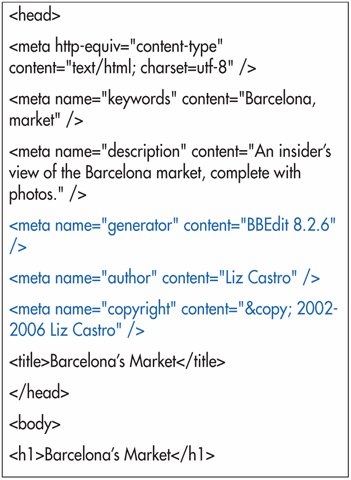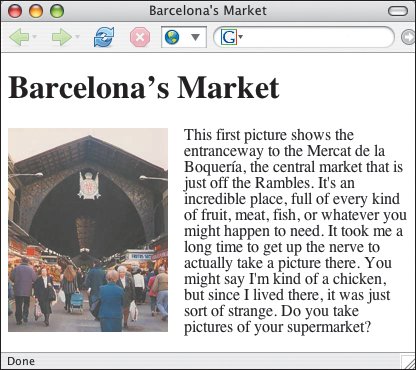Controlling Other Information
| You can also add information to your page about who wrote it, what program was used (if any) to generate the (X)HTML code, and if it is copyrighted. Note, however, that search engines do not currently use this information (though they may some day), and browsers don't display it. To control other information about your page:
Figure 24.6. You can use as many meta tags as you need.
Figure 24.7. The meta information is always invisible in the browser. |
EAN: 2147483647
Pages: 340
- The Second Wave ERP Market: An Australian Viewpoint
- The Effects of an Enterprise Resource Planning System (ERP) Implementation on Job Characteristics – A Study using the Hackman and Oldham Job Characteristics Model
- Intrinsic and Contextual Data Quality: The Effect of Media and Personal Involvement
- Healthcare Information: From Administrative to Practice Databases
- Development of Interactive Web Sites to Enhance Police/Community Relations

 Tips
Tips